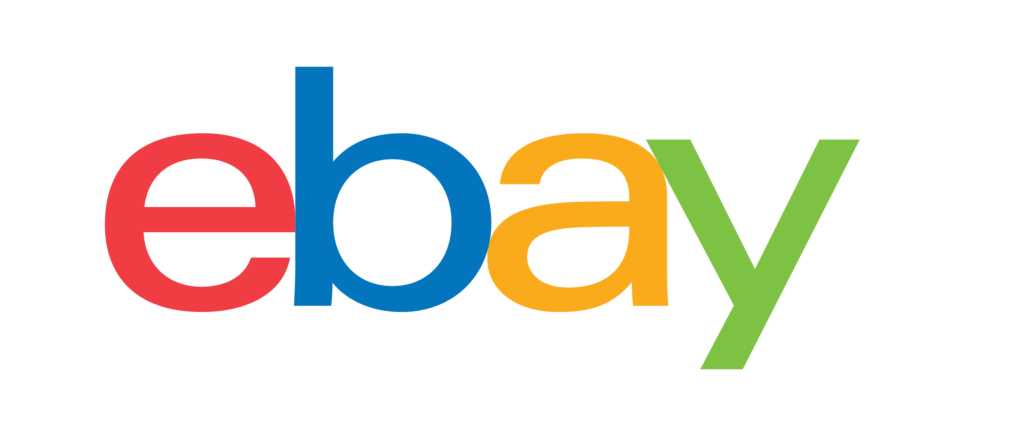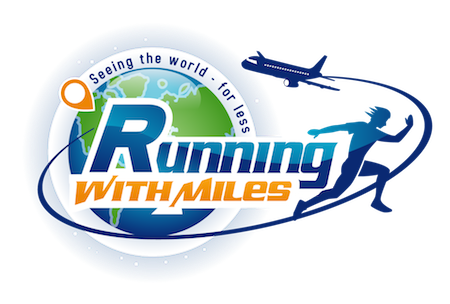Every so often, I like to write a little bit about blogging. Sometimes, people are confused as to what “blogs” really are, especially in this space. Also, people are curious about the issues of blogging if they are curious to start one themselves. Today, I want to look a little bit at affiliate marketing, the relationship behind blogger and reader, and a couple of other things.
Behind Blogging
Affiliate Marketing in Blogging
Let’s start with this one since this is actually a big area of interest with some readers, in forums, and elsewhere. Believe it or not, 🙂 most blogs in this space are businesses. Just because someone calls their website a “blog” does not mean that it is not their main source of income (or even a partial source). I think when people hear “blog” they often think of just some online diary or hobby site. Make no mistake – blogs are often businesses (and there is nothing inherently wrong with that).
Probably one of the main sources of incomes for most blogs in this miles and points space is through affiliate links. These can be something like Amazon, eBay, online retailers, or credit card applications. The payouts for each varies. Some of the time, it is in the agreement that the blogger signs with the affiliate to not disclose the amounts or percentages earned. This is often done since the payouts may vary or that the company does not want to publicize what they are willing to pay for customers.
Amazon

Amazon is a very popular affiliate source and one pretty much anyone can get. In an area like ours where we all like earning miles and points, it is actually a great one for bloggers and readers since it is often not possible to earn any miles, points, or cash back through portals with Amazon.
So, by clicking on the Amazon product link in a blog, the reader is able to pay the same price they would if they went right to Amazon and the blogger earns from 1% – 10% return on what is purchased. In my situation, I would say around 4% is the average.
Amazon makes it very easy bloggers to insert links for items since there is a bar at the top of the Amazon pages that lets you quickly grab a link with the affiliate code in it for any product on the Amazon site. There is also a plugin for WordPress (the popular blogging platform) that lets you drop a link in the post by highlighting text and searching Amazon for that item.
eBay

eBay is another popular one. eBay actually makes it pretty easy (like other sites as well) by letting the blogger insert a piece of code in their site that turns all eBay links into affiliate links. This makes it very simple to just grab a link for some eBay item and drop it in a post and get some earnings if people purchase through that.
eBay pays much less, around a couple of percent, for items purchased through their affiliate program.
Other Affiliate Sites

There are large affiliate sites that work with retailers to act as the middleman between advertisers and publishers (bloggers). These sites allow bloggers to apply for the various advertisers through their portal and the get all of their links from there as well. Similar to eBay, some of them offer codes to insert into the blog to turn any approved advertiser link into an affiliate link.
One of the popular ones in the miles and points space is for the purchase of miles or points. This is done through Points.com and pays a couple of percent to the blogger from the purchases of those miles done through the affiliate link. It is somewhat easy to identify which miles and points pay out affiliate commission – just look for the programs that are advertised or talked about the most during sales!
Credit Card Affiliates

This is the big money source for blogs! At various times, this blog has been both a direct and indirect affiliate of the major credit card companies so I know this area pretty well.
Direct Affiliates
There are two types of affiliates in this category – the direct and indirect. The direct affiliate is the one who has links that work directly with the card issuers to target specific credit cards. For example, if you click on the Chase Sapphire Preferred through a direct affiliate blogger, that link will take you right to the application page for that card. This kind of affiliate relationship pays out the most for the bloggers – typically between $80-$250 depending on the credit card (the average used to be around $150 and is probably still somewhere around there).
Indirect Affiliates
The indirect affiliate is one that works with a middleman that offers links to go to a page of credit cards. The indirect affiliate blogger is not allowed to tell readers where to click to find a specific card or to link a specific card name to that indirect link. They are also not supposed to direct people to their links like you can with direct links. This makes it a bit more difficult at times since once that reader clicks on one of those links, they are supposed to find the card on their own. The indirect relationship pays out less but still a decent amount – between $30 – $150 for most cards.
The Difference Between Direct and Indirect
The difference between the two types of relationships depends on the amount of successful applications that a blogger can convert. Since the bank issuers have to be very careful with compliance issues, they have people reading everything that direct affiliate blogs write to check for compliance (if the blogger writes “hey, apply for the Chase Sapphire Preferred to get 50,000 points now and another 50,000 points later”, the issuer is responsible for that and may need to pay a fine).
To be a direct affiliate, it used to be that the affiliate managers wanted to see, on average, at least 50 successful conversions per month. This way it made it worthwhile for the manager and the issuer to deal with that blog. I know that there were a few that saw several thousand conversions each month per issuer (do the math on that one – 2,000 times $150 times 4 issuers – per month!).
Even with indirect affiliates a quota still needs to be met. It is much lower but can also be harder to achieve since you cannot be so direct in referring people to those cards. If you see a lot of credit card posts from some bloggers near the end of a month, this could be a reason since the quotas need to be met to continue in the program.
Regular Credit Card Referral Programs
Other than that, you have the regular issuer referral programs that any cardholders can participate in. This is what I use on this site now. Instead of getting paid in cash, I get points (the same points that you would get if someone applied through your referral link). If you were to start a blog, this is a great way to go since you get to earn more points and miles to do more travel yourself.
Advertising Revenue
A couple of years ago, advertising revenue for blogs like this one used to be really, really good! But, you will notice if you look at any ad-supported media site today that they are all suffering a bit in the hit on ad revenue. Part of this has to do with more media consumption being done on mobile devices where ad rates are not quite as good as desktop rates.
While Google Adsense may give smaller sites like 50 cents per thousand page views (based on when I was on my own as a much smaller site), larger platforms are able to get better rates from Adsense and deal directly with large advertisers for better rates as well.
One of the many perks of being on the BoardingArea platform is that they are able to negotiate for ads based on the platform as a whole. This means that we are generally able to get better ad rates than most similarly-sized blogs out there. There are some advertising networks that can even beat these rates but their style of advertising is not really suited to the sites like this that readers may check a couple of times a day (the ads may be a bit more overwhelming for frequent visitors).
Advertising revenue is definitely the least of the various revenue streams for these sites, as far as the potential. What one credit card affiliate conversion could bring in may require 12,000 page views! It’s kind of like a gas station – the gas station owner would be better off if you were to buy a $1 cup of coffee from the shop than to fill up your tank with 25 gallons of gas. Of course, we are equally grateful for any support!
The Relationship with BoardingArea
I said “one of the perks” with BoardingArea was the advertising. The truth is that being hosted on the BA platform goes way beyond ad rates. There is an entire group of people that manage the platform that take all of the headaches away from us bloggers like technical stuff, ad placements and negotiations, and even helping with newsletters, media design, plugins, and much more. The BoardingArea staff is an amazing staff with people that it is a real pleasure to work with! Randy Petersen has put a great team together!
How the relationship works with the blogger is that BA takes a portion of the ad rates that are earned – that’s it. They don’t tell us what we can and cannot write, they don’t take anything from affiliate income – just some of the ad revenue (which is better than we would earn on our own anyway!). In return, they provide us with all the support and hosting and we don’t pay for any of that. Believe me – that is an awesome trade!
The Relationship Between Blogger and Reader
When it comes to developing a relationship, as a blogger, with a readership, there are two main ways this can be done. You can treat the reader as the product or as the customer. Since most blogs do not charge for the information on the site, that would seem to indicate (as it has been said) that the user/reader is the product. The blog serves up advertising and affiliate links and makes money off the reader.
Bad Blogging Relationships

In this area of blogging, there is often some bad feelings between the readers and the blogger. It is amazing to read on various sites sometimes how readers get mad about information that is freely provided on a blog. The anger is directed at some mistake in a post or the type of post it might be. The problem is that this reader is ignoring that the blogger had taken the time to put that information into a blog post to be shared via a free-to-access website.
Here are some things that a blogger can do to attract this kind of anger/frustration/etc.:
- Writing blog titles are clickbait – written in a way to encourage people to click without backing up the point or providing a substantive post for the title
- Putting little/no work into a post – basically, writing 30 words to drop in affiliate links
- Misleading readers by claiming/alluding that a certain offer is the best while there are better offers (that just happen to not pay the blogger)
- Writing a poorly researched post that has a lot of incorrect information that is a complete waste of time for the reader
And there are certainly many other things that we bloggers can do that can frustrate readers! But, if a blog consistently does some of those things, it is simply time for the reader to move on to a source that they find to be more helpful for their time. There is nothing wrong with commenting on incorrect information but, you are better off just ignoring that blog in the future and moving on if they consistently do a poor job of providing the type of content you are looking for.
Respect Goes Both Ways
Here’s the other thing – if a blogger treats the reader as a customer or even as part of the blog’s community, this should be a two-way street in the area of respect with this relationship. That means that the blogger does the best job that he or she can do to provide information that is helpful and the reader pays that back by frequenting the site for more of that content (and thus helping the blogger to earn some money with advertising revenue) or by using the links that the blogger has.
Providing Value for Content Value
This is how this situation can be helpful for both – say a blogger writes a detailed post (or series of posts)on how to use United Airline miles for maximum value. In the course of this post(s), the blogger shows some tips and tricks that a reader would otherwise have not known. On these pages, the blogger is advertising the United Airlines Explorer card that offers 40,000 miles.
Now, what I think is good to do as a blogger is to also let the readers know that they can go to the United website and find a different offer if they go through the booking process (without actually booking) and earn that same amount of miles while also earning a $100 statement credit.

Chase United Explorer Offer
This type of blogger has provided great value in the amount of research and details to show readers how to maximize the value of the United miles. For the blogger/reader relationship to work the best, the reader can “pay” the blogger back for helping to learn things they didn’t know before (and that they did not have to pay a fee to learn) by using that blogger’s United affiliate link instead of the the way that would earn the reader an extra $100. Essentially, the reader is forgoing that $100 to let the blogger earn that $100 through the affiliate conversion as well.
To me, this is a way that the blogger/reader relationship becomes more like a customer/community relationship than a product-driven relationship. When the blogger receives affiliate income for such posts, they are able to spend more time to create more helpful content for readers.
Note: This is NOT to say that every post a blogger does is or should be a full-on research post on how to best use your miles. For many readers, short posts with great deals can be of great interest as well and can sometimes give even more value – a great deal that is found and written about that brings the reader value is of importance as well.
Readers That Do Contribute Back
Now, if the readers learn all of this and then refuse to allow the blogger to earn money (by going directly to the bank’s website to apply for the same exact offer, by turning on ad-blocking software, by going directly to Amazon instead of using a link), this is a selfish move by a reader that has been able to learn something through the work of a blogger. This is not a healthy blogger/reader relationship and it does not help to build a community around the ideas of the blog.
On the other hand, if the blogger is doing things like I detailed above (like writing a 30 word post to dump affiliate links in while providing no value), that blogger should not be surprised if the readers are not rewarding that kind of content by providing revenue for the blog.
A Great Example of a Blogger Building a Valuable Blogger/Reader Relationship – Doctor of Credit
I think one of the best blogs in this whole space in the area of building an ideal blogger/reader relationship would have to be Doctor of Credit. William and his team are highly respected in all areas of the miles and points space, even on the Reddit churning sub which can be brutal about blogs overall. 🙂
DoC provides great value and, in return, his readers provide revenue back to the site in the form of using his affiliate links (he does not have credit card links) or allowing his ads to be displayed. I do not know the particulars of the revenue of the site but, given what I do know about blog revenue, I would say that he is doing pretty well and he is able to pay his writers to provide the same valuable content as well.
Another example of a blogger building a community that supports the blog is Dan’s Deals. Many of his faithful readers are among the most shrewd of deal hunters yet many forgo the shopping portals to use his links because he provides value to them through his in-depth posts and the forums he provides. Do most of his readers know about the shopping portals? Of course they do – he doesn’t even need to mention them. But, they use his links because the get value from the site.
Takeaway
Contrary to what many blogs may say, most of us are not writing for “friends and family.” 🙂 We may have started like that but none of us have families or friends that number in the thousands (or even millions) of readers that we might have as bloggers now. There is nothing wrong with making money on blogs and some have turned their blogs into their full-time jobs. I think that is great when someone chooses to do that and is able to make it.
But, there is a way that a blog can do that while treating the reader like a customer and building community over treating the reader like a product. I think there are some blogs that have built great communities in a way that respects both readers and the blog.
If you are thinking of starting a blog of your own, hopefully some of this was helpful to you – even if it made you decide not to do it. 🙂









Which plugin do you use for Amazon products on WordPress?
I use Amazon’s own Associates Link Builder.
One of my favorite posts in a long time. Informative.
Thanks, Jay! These are always fun to write. 🙂
[…] Read More… […]
“Selfish Reader”
I ALWAYS go straight to the bank to sign up for a card. The less they spend on acquisition the more they can pay out on bonuses. Proud to say I’ve signed up for 70 credit cards over the years and not a single one has been through a blog. All direct.
But the blogger does make money on the display advertising within their site.
I edited that heading because it was a little harsh. 🙂
If the blogger’s link and the bank’s link have the same offer, applying through the bank will have zero impact on bonuses. There is a trend where the banks are offering better bonuses through other than affiliate channels (I have written some posts on this)but this is not mainstream yet. They have the data and when they figure it is time to do that across the board, they will make the switch. Right now, those budgets are completely separate – customer bonuses vs customer acquisition. I think we will see a switch over time but that is more because the internet is saturated with “how to get value” kind of posts and the issuers know that this is already out there. But I also don’t necessarily think that a drawdown on affiliate bonuses translates to increase in bonuses. Remember how much these banks love their profits! 🙂
The amount of money a blogger makes from you (with advertising) visiting and learning from whichever blogger you visit is very minor – like you have probably helped your favorite blogger earn a total of $10 if you have visited their site every day for 2 years. Still your choice as to where you apply for cards. If you still use other links when you learn stuff from a blog, at least that helps more than simple advertising revenue.
Thanks for commenting and helping me straighten out that heading!
You can keep Peter here thanks!
[…] Behind Blogging: Affiliate Marketing, Blogger-Reader Relationship, and More by Running For Miles. Some interesting information in there for people that like to know the nitty gritty. I wanted to link to this post before I read the nice words RFM wrote so I feel a bit awkward about linking to it now but just gloss over those for me. […]
Great post.
If only Doctor of Credit would stop linking to blogs that screw their readers…
Nice. Love the transparency.
Doctor of credit sends his love.
[…] Behind Blogging: Affiliate Marketing, Blogger-Reader Relationship, and More by Running For Miles. Some interesting information in there for people that like to know the nitty gritty. I wanted to link to this post before I read the nice words RFM wrote so I feel a bit awkward about linking to it now but just gloss over those for me. […]
Great, thoughtful, insightful and well written post. Thank you for spending your time on writing this post.
Cheers,
PedroNY
Decided “not to”.
Thanks for great post. Pleasure meeting you in ATH a/p many months ago on my way to your city of residence.
one thing you left out that maybe people know about and that’s why (but i don’t) is the ad revenue part of things.
Is that something you are familiar with?
And secondly, being a Boarding Area blogger–maybe you can’t talk about that part of it–but what do they get off the top? Like do they get part of your credit card commissions?
Not trying to be intrusive, just following up a couple loose ends. Thank you for the helpful article.
Thanks, Thom! I had originally thought not to include that since I had done something about that in the past and ad revenue is the least paying element, but I went ahead and included it here as well (in the post).
To summarize, ad rates are pretty low in relation to affiliate income (potential income – ad rates are actually my chief source of income on this site). BoardingArea takes a cut of that in exchange for handling all the design, technical, ad negotiation and placement, and hosting fees. It is a very generous arrangement for the bloggers to be sure. That is all they take, they don’t touch any of the affiliate income (that is all between the blogger and their affiliate partners).
Hi Charlie,
Excellent article on affiliate marketing. A list of the top five or ten blogs with the largest credit card affiliate revenue would be interesting. Can you or anyone take a good guess and post a list here?
Thanks, BOND! I don’t know of a list, but here would be my guess: The Points Guy, One Mile at a Time, View from the Wing, Million Mile Secrets. Those would definitely be the top 4. After that, I would guess that Frequent Miler would be in the top 10 as well. This is all just guessing as I don’t know anyone’s figures. In the case of The Points Guy, they get over 7 million visitors (not page views) per month. Say that 10% of those people apply for a card. Standard averages would say that 3-4% of those would be approved. If we put the average payout at $150 per card, that would equal about $3.15 million per month. I cannot say for sure but I would not be surprised to find that this number is in the ballpark, probably a bit on the high side.
[…] Some really good info about blogging: Behind Blogging: Affiliate Marketing, Blogger-Reader Relationship, and More. […]
For the Amazon links, is it true that if I click on an affiliate link, the affiliate keeps getting the credit for all my future purchases, for a certain amount of time?
Amazon links last for 24 hours (this is why you see some blogs/websites post really poor deals sometimes without prices – they just want your click for referral in the next 24) while others (like some hotel affiliates) can last as long as 30 days.
First off, superb post. Showing a bit of transparency does a lot to ease some of the cynicism in the blogging industry.
Secondly, you’ve always shown the highest standards, which I personally appreciate, even if I’m in the minority.
Finally, I very much don’t mind helping out a blogger, but don’t want to be played.
Thank you. Very interesting.
Excellent post, and I’m a bit surprised that BA is OK with your publishing it.
I do miss the time, up to maybe 8 or 10 years ago, when the banks didn’t control what the bloggers wrote. I remember several instances when blogs advised against applying for one credit card or another, because a better deal would be coming out in a few days. I’m sure the banks hated that, and you don’t see that type of notices any more.
Well said and sadly true.
BA doesn’t mind all of this being shared! Like I said, they don’t control what we write. The only thing they would prefer not be talked about is the exact revenue split with the ad revenue. Other than that, no biggie!
It has been getting very restrictive with the banks for sure. That is why I had cut off the relationship with Amex years ago – they would not let me link to an offer on their own site that was better than the affiliate offer! You can only link to Amex offers that are in the affiliate channels.
They definitely hated churning and even having the word “churn” on my site got a post flagged – it was talking about churning out the miles in training! 🙂
[…] クレジットカード会社と直接提携しているため報酬はIndirect affiliateに比べると多いようです。1枚につき80~250ドルぐらい(Running with miles情報) […]
Since Airsoft guns are built to look realistic, carrying one that is visible to others is really a bad idea (and illegal).
Most in the websites have thousands and thousands of sms related to
one event and a person is surely going to look for a text that is on complete use
to him or her. If you are looking for risk-free i –
Pod Nano downloads, you then needs paid sites that enable the service.